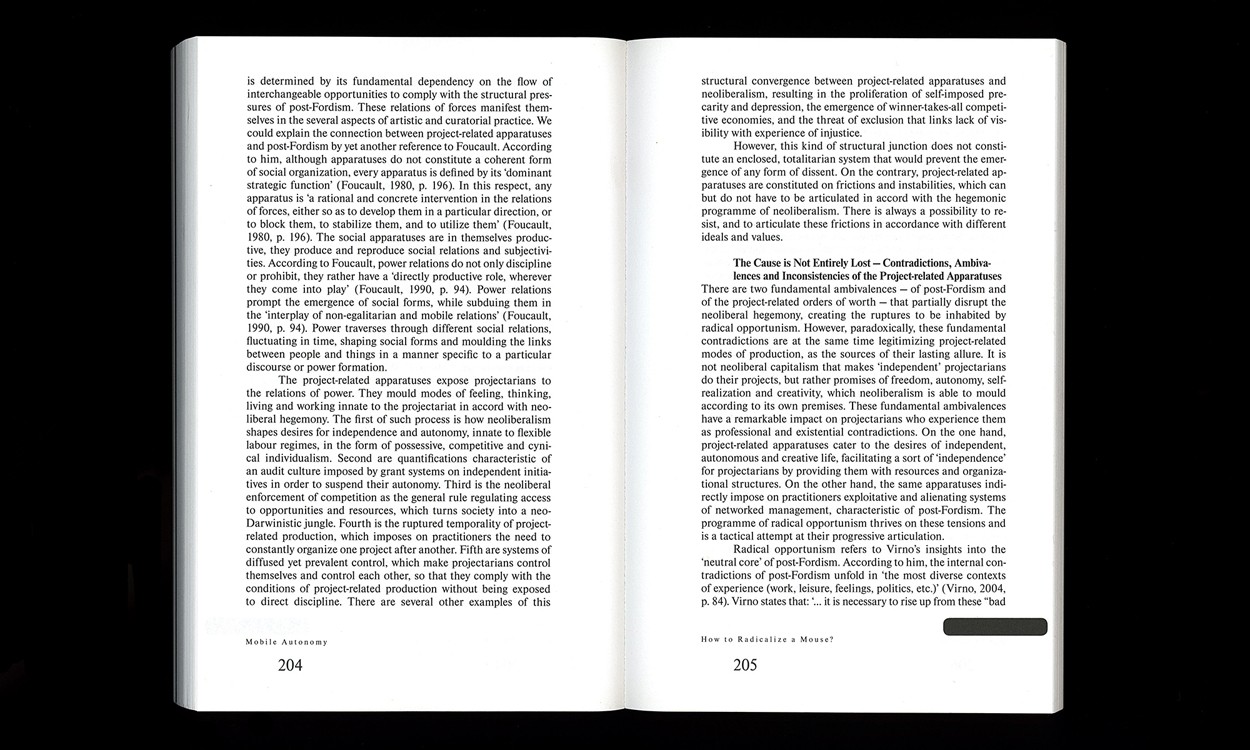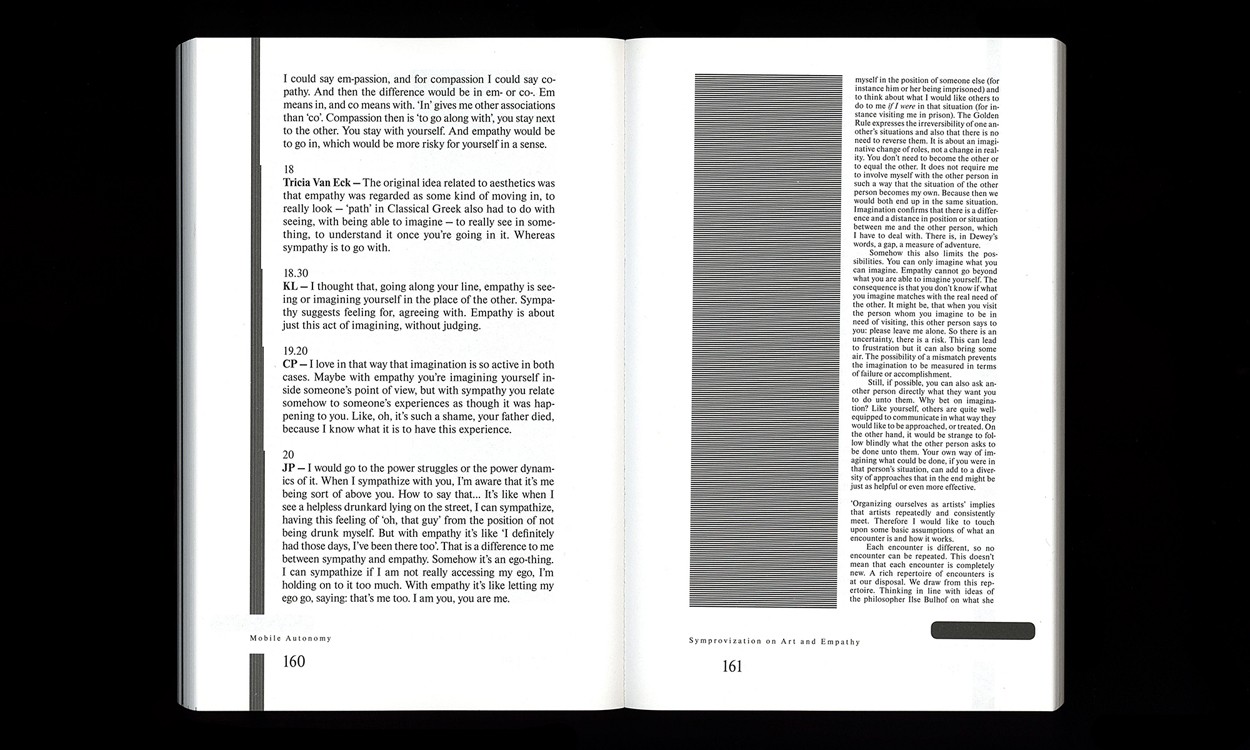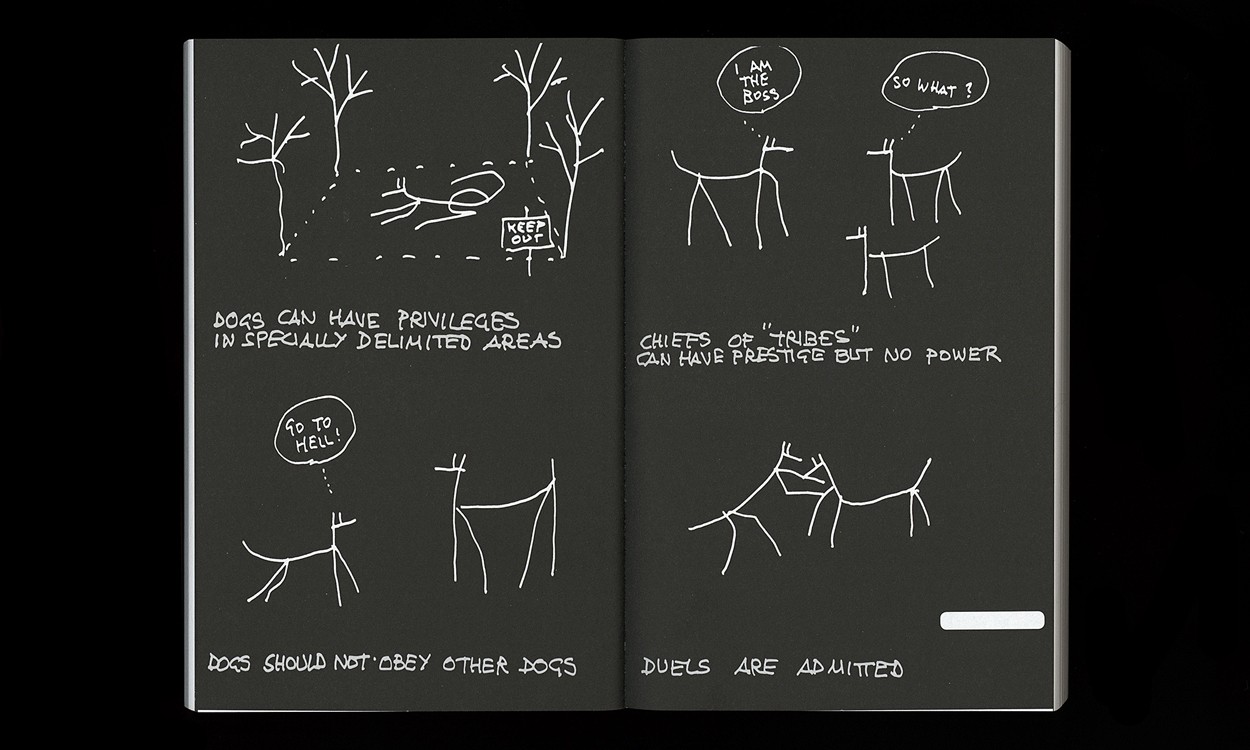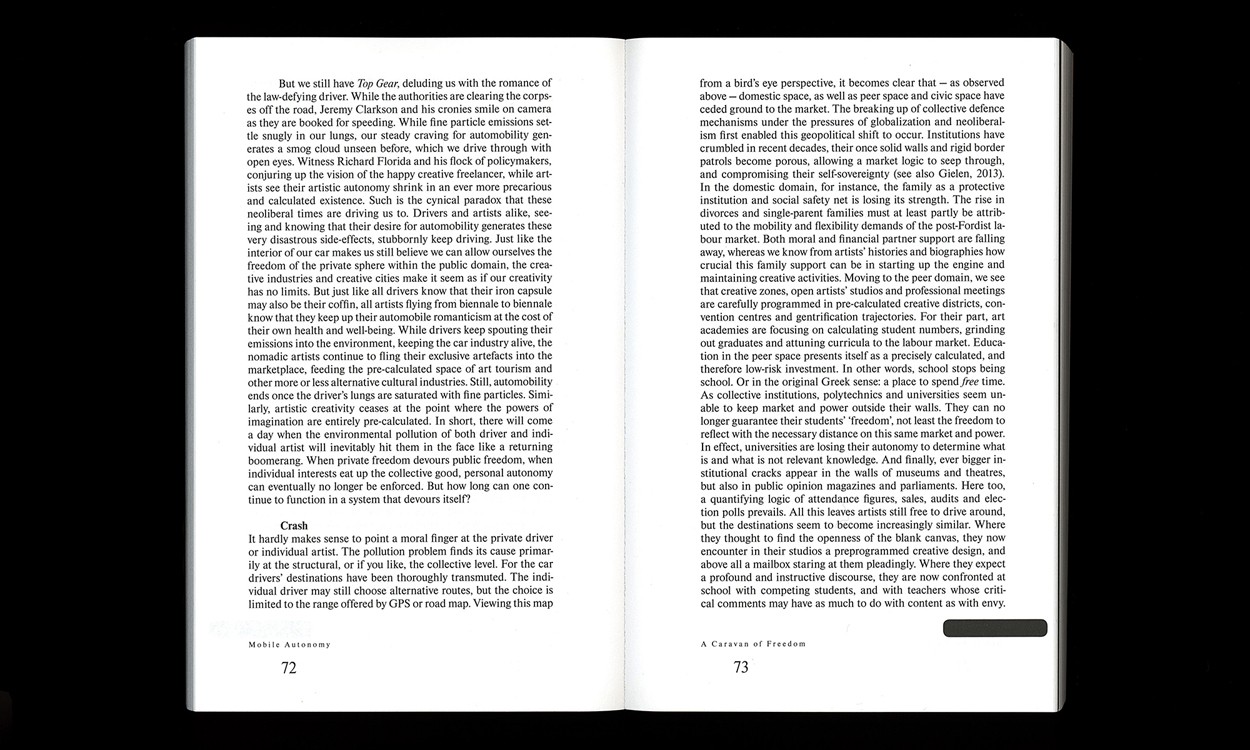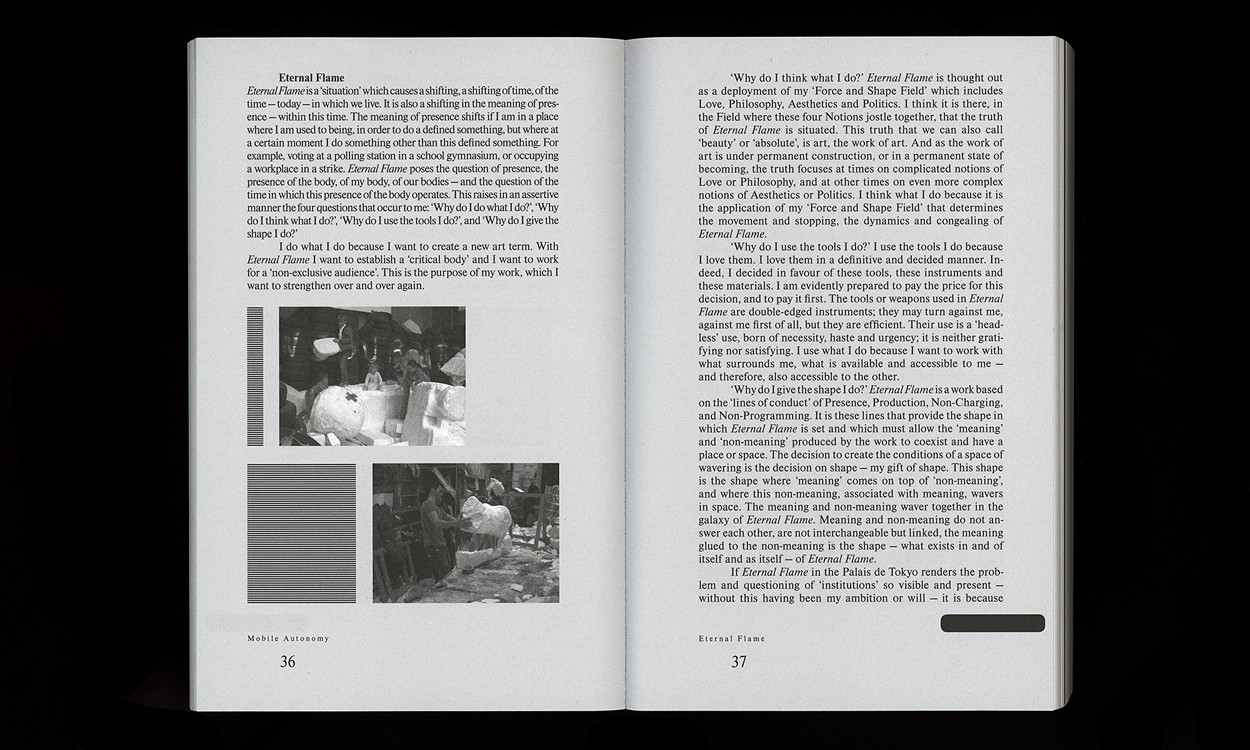Mobile Autonomy
Exercises in Artists' Self-Organization

- How artistic autonomy evokes different innovative working modalities
- Combines theoretical insights with hands-on practices, examples and art-works
- Antennae series: Award Dutch Best Book Designs 2015 by the student panel of judges
Editors: Nico Dockx, Pascal Gielen
Contributors: A Dog Republic, Nico Dockx, Jef Geys, Pascal Gielen, Erik Hagoort, Thomas Hirschhorn, Kirsten Leenaars, Isabell Lorey, Oda Projesi, Louise Osieka, Jason Pallas, Caroline Picard, Raqs Media Collective, Kuba Szreder, Jonas Tinius, Tricia Van Eck, Sara Weyns
Design: Metahaven
Series: Antennae, Arts in Society
2015, Valiz | supported by Royal Academy of Fine Arts Antwerp, Middelheim Museum, Lokaal01, Extra City Kunsthal | paperback | 255 pp. | 21 x 13,5 cm (h x w) | English | ISBN 978-94-92095-10-7
Table of contents (pdf)
Introduction (pdf)
About the authors (pdf)
Neoliberalism has taken autonomous professional values and labour firmly in its grasp. Traditional forms of employment are replaced with post-Fordist conditions in which work has become freelance, mobile, project-based, and temporary. This way of working is not new to artists. They have seen themselves confronted with these precarious conditions for many years. Mobile Autonomy detects what modes of economy and different innovative working modalities artists and other artistic professionals have developed in order to create their work in today’s social, economic and political conditions. Theoretical insights are alternated with hands-on practices, in order to learn from and reflect on contemporary artist’ working conditions.
‘We need to stay mobile to keep our autonomy alive, and we need to develop new autonomous practices to keep our mobility alive.’

